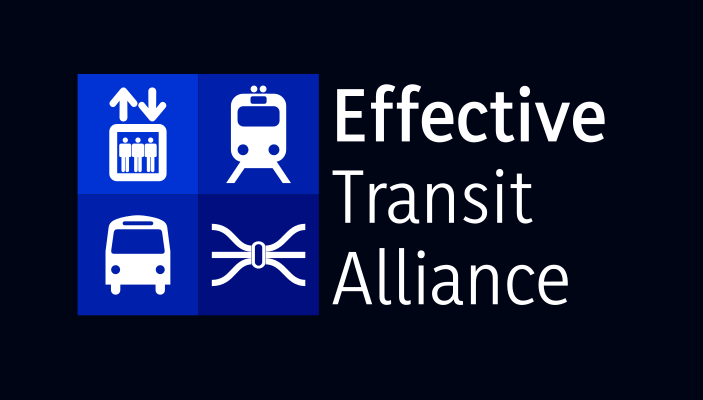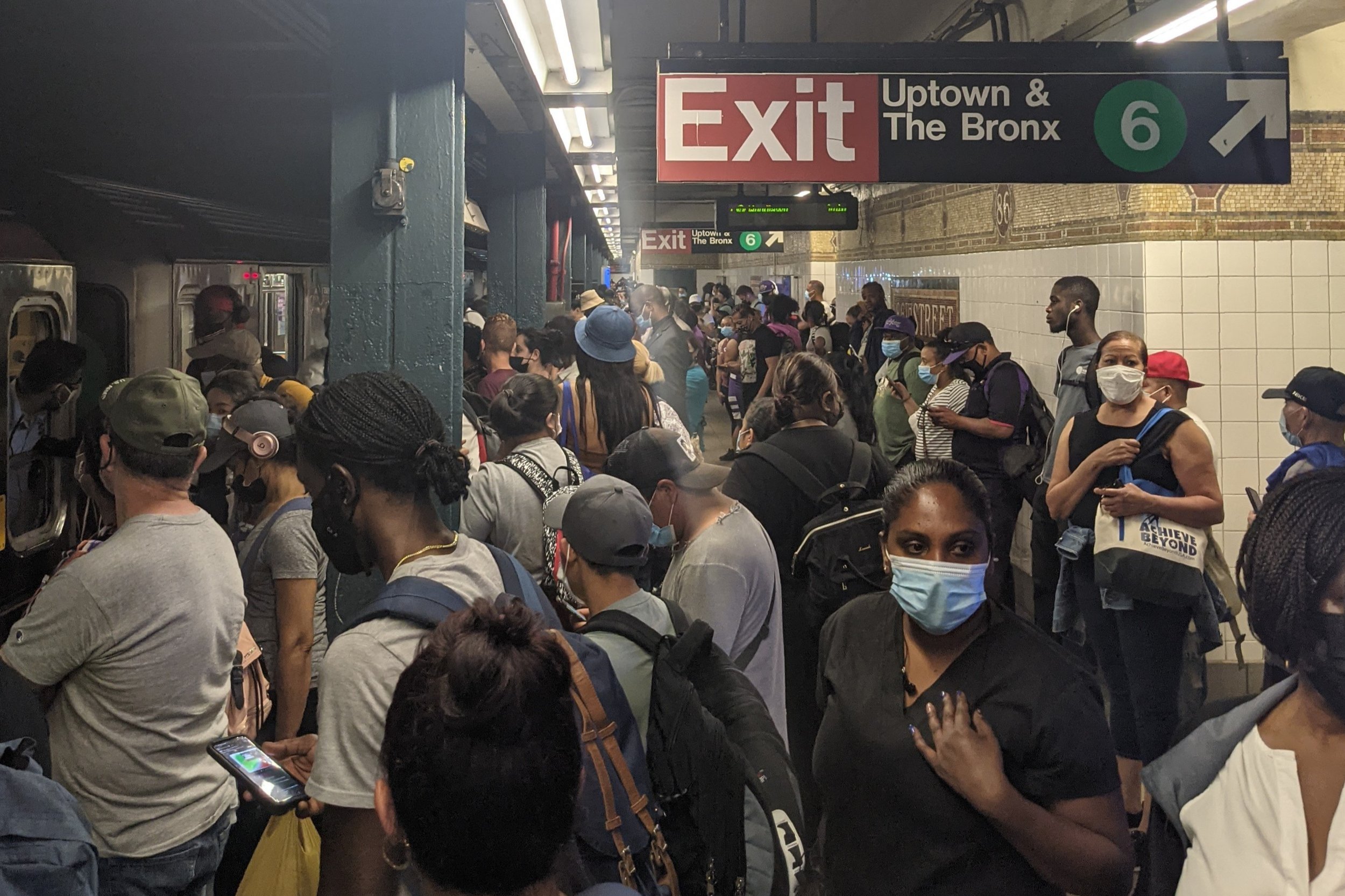A Step in the Right Direction: The Keys to a Six Minute Service Paradigm
New York needs and deserves Six-Minute Service
Thanks in large part to the Riders Alliance's tireless Six-Minute Service campaign, New York State's recently passed budget includes a significant increase in funding for transit service, and as a direct result, the MTA is a planning a significant expansion of off-peak subway service over the coming year.
On one hand, these improvements represent a tremendous first step towards bringing service on the New York Subway up to the standards of peer cities worldwide. They will also go a long way towards helping to ensure that New York remains a transit-first city even in an age of remote work and a decreased focus on traditional commutes.
But on the other hand, the MTA needs to do more to ensure that it is providing the frequent, quality service that riders deserve, at any time they might be traveling. As is true with transit all over the world, ridership follows service. To further close the gap with peer transit systems and provide the level of service that New York needs, the MTA will need to both improve its maintenance practices and shift how it schedules and deploys its workforce.
The MTA's proposed service increases…
The first phase of the improvements are expect to begin this July, and will:
Begin by boosting weekend service frequency on the G, J, and M lines to every eight minutes, up from the current 10 minutes.
In August, the MTA plans to boost C, N, and R service to every eight minutes on middays during the week and 1 and 6 service to every six minutes on weekends during the day.
In December, plans call for increasing weekday evening C, N, and R service and weekday daytime G service to every eight minutes, up from every 10-12 minutes. Officials also expect to expand the weekend six-minute schedules on the 1 and 6 trains over more hours.
Finally, in summer 2024, midday and evening service on the B, D, J and M lines would increase to every eight minutes, and weekend service on the 3 and 5 lines would increase to every 10 minutes.
...are good, but not good enough.
For all its positives, the MTA's current plan still leaves dense neighborhoods near the very center of the city—such as Inwood, Crown Heights, Queensbridge, and Cobble Hill—with 10-minute headways, falling short of the six-minute goal. In fact, the current plan would only establish six-minute headways on the 1 and 6 services, neither of which share track with any other line. This is an improvement, but it doesn't even meet the standards of a decade ago, when both lines had trains running every five minutes.
Running inadequate frequency creates crowding and drives riders away.
Moreover, while we applaud that the state is finding money to increase weekend service, midday service needs a large boost as well. Luckily, the marginal operating cost of adding subway service between the morning and afternoon peaks is low. On transit systems that maintain frequent service over the course of a whole day, most employees work single, continuous shifts instead of splitting working hours between morning and evening, not only reducing the cost per worker, but also improving worker quality of life. These types of flat schedules also improve the reliability of train merges, an important factor in a branching system like New York's. Last but not least, in a world of remote work where rush hour peaks are greatly diminished, it only makes sense to better distribute service hours over the course of the entire day. Accordingly, six-minute service should not be limited to the 1, 6, 7, and L, but should also be brought to routes that share tracks with other lines.
Consistent, frequent service greatly benefits passengers, and helps drive transit usage as a result. This is especially true on a complicated subway system like New York's, where transfers are common. By decreasing the amount of time spent waiting at every transfer, total trip times can be reduced tremendously. The same is true of shorter trips, where waiting time makes up a greater percentage of travel time than longer trips. Simply put, frequent service makes many journeys faster and more practical, reducing the appeal of car ownership.
This would also help begin to put transit in New York on a solid footing compared to other world-class cities. London's new Crossrail system, for instance, has been a massive success, driving major ridership increases. As a result, it is already planning to boost its operations from trains coming every 3 minutes 45 seconds on its trunk and every 7.5 minutes on its branches, to trains every 3 minutes on its trunk and every 6 minutes on its branches. As always, ridership follows service.
Maintenance and frequency
Unfortunately, as has happened in the past, proposed off-peak service increases are coming into direct conflict with the MTA's lackluster maintenance productivity.
Over the last twenty years, the Maintenance of Way (MOW) department has demanded ever-longer windows without trains and ever-slower speed limits on tracks adjacent to work zones (a procedure known as "flagging"). While safety must be any transit service's paramount concern, these rules have unfortunately not improved worker safety, while greatly slowing service. In actual fact, safety is down in recent decades: a benchmarking report has worker injuries rising from 2.19 missed days per worker in 1999 to 2.65 in 2010 and a staggering 6.84 in 2019, the fourth worst among the 25 large international systems the report looks at.
Again, safety is paramount, but the MTA must roll back the flagging changes it has made over the past years, and instead coordinate its weekend maintenance programs around a service-first paradigm. Even the MTA's currently proposed service boost requires the speed at which trains are permitted to pass work zones to raise from 10 to 15 mph.
In the future, the MTA must strive to improve MOW's productivity, and in particular, it should assimilate best practices from other large transit systems. Chicago, for instance, achieves more than twice as many service-hours per maintenance worker despite also providing 24/7 service on many of its lines. In fact, the Chicago Transit Authority's competence in operations and planning was nationally recognized in the past, to the point that New York City Transit and other American agencies would send planners there to train until the 1980s—a practice which should return.
Small Tweaks that lead to a Paradigm Shift
For the MTA, Six-Minute Service should mean more than simply running trains more frequently. It is a paradigm shift made up of small components that each interact with one another to improve public transit in New York
| Traditional scheduling | Six-Minute Service |
| Peak-focused scheduling | Nearly flat all-day scheduling |
| Frequency is just a way to provide capacity | High frequency brings in ridership by itself |
| Each service has a separate frequency | All services sharing tracks run the same frequency |
| Frequent tweaks to individual line schedules | Relatively static, optimized schedule |
| Off-peak trains run around maintenance | Maintenance is done around off-peak trains |
Transitioning to Six-Minute Service paradigm is all about recognizing the importance of each of these aspects. The MTA's current plan undoubtedly takes some steps in the right direction, especially on the first two goals, flatter scheduling and utilizing frequency to drive service. Still, partial increases across the system to a train every 8—or worse, every 10—minutes falls well short of the service New York needs. The MTA has also not recognized the importance of utilizing static schedules or optimizing maintenance and performing it around service.
For riders and the MTA's fiscal health, it is imperative that the service changes coming out over the next year represent the beginning of a shift towards a Six-Minute Service Paradigm, and not an end



